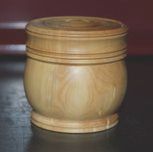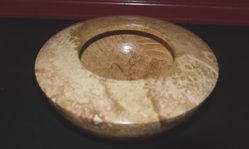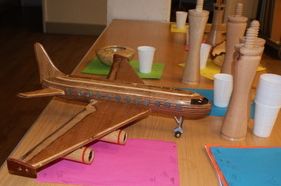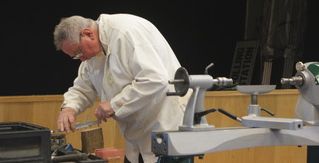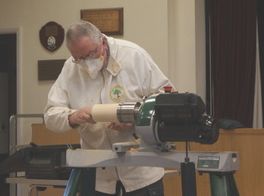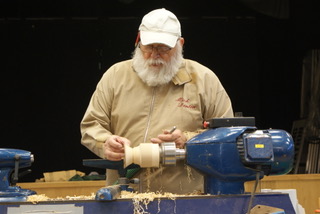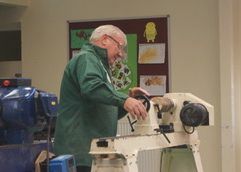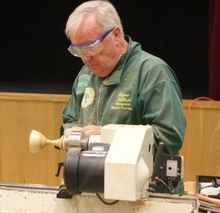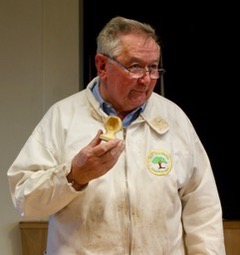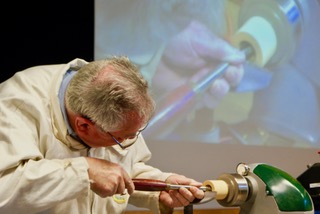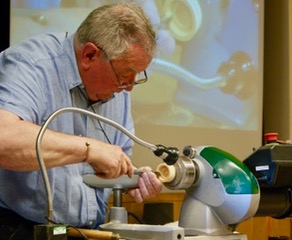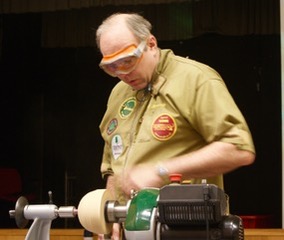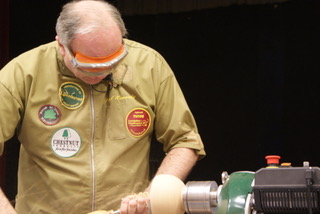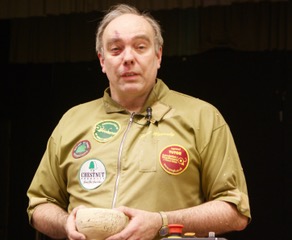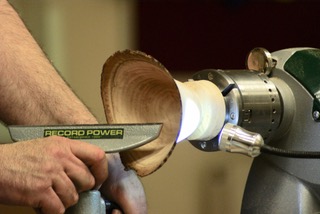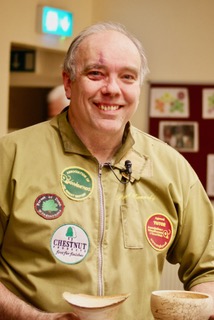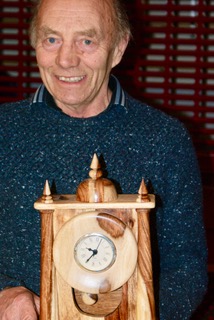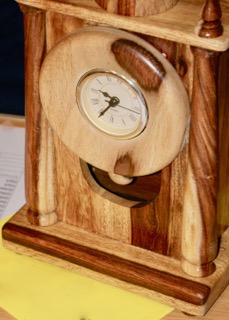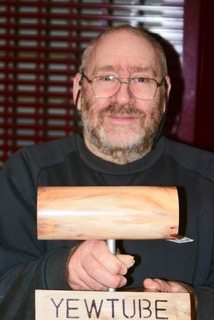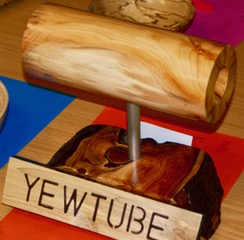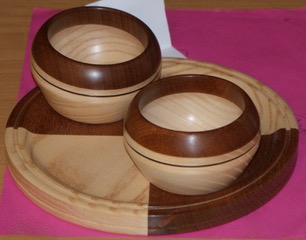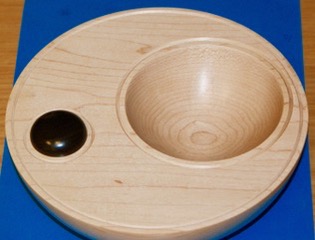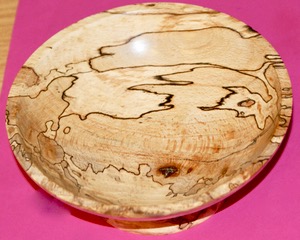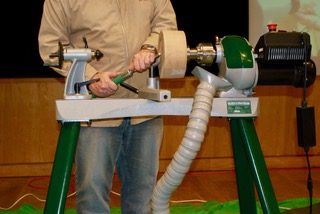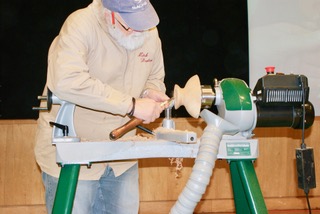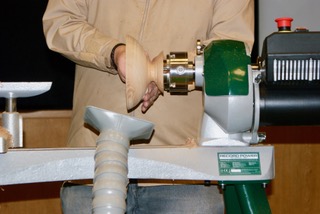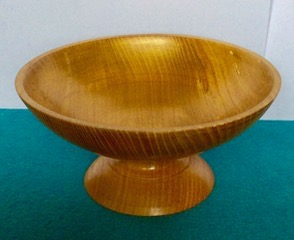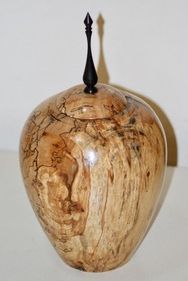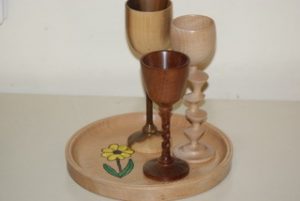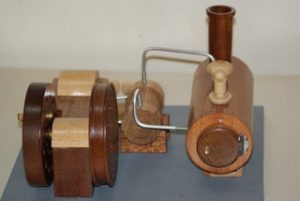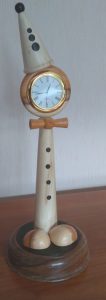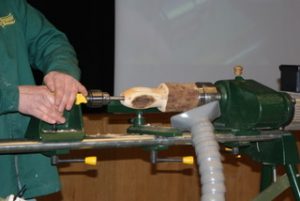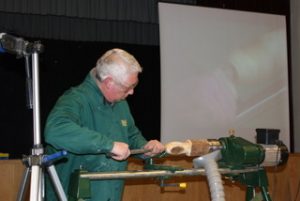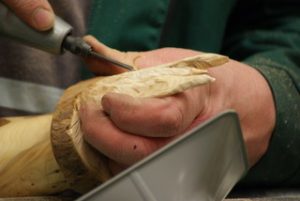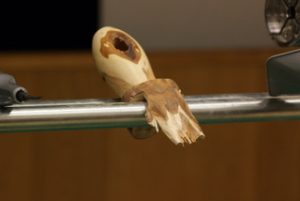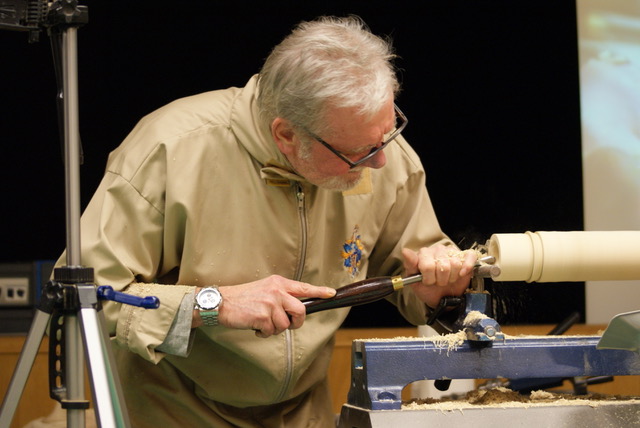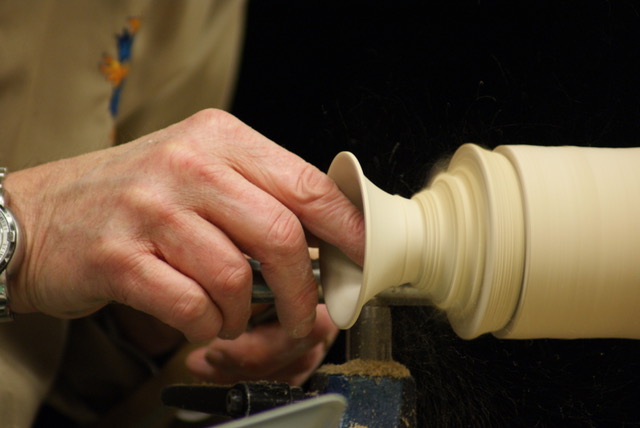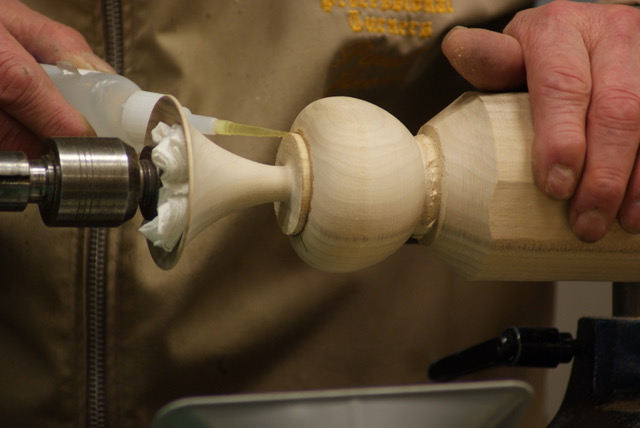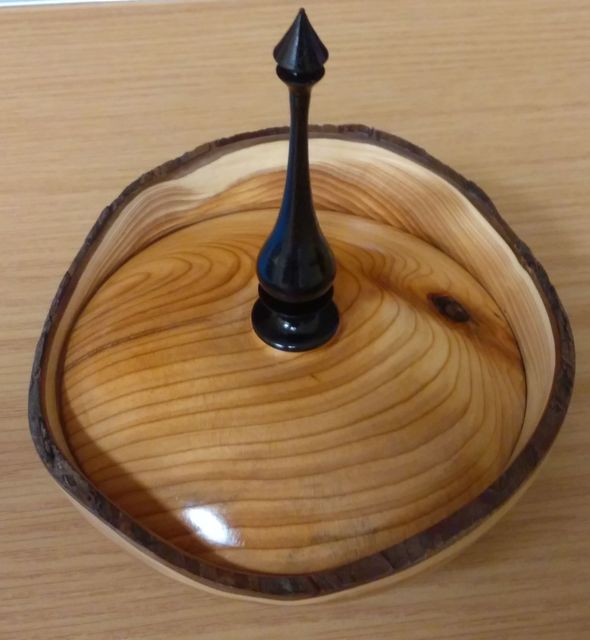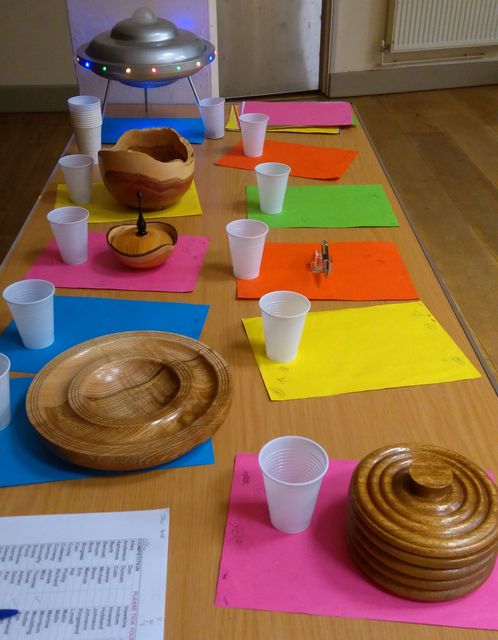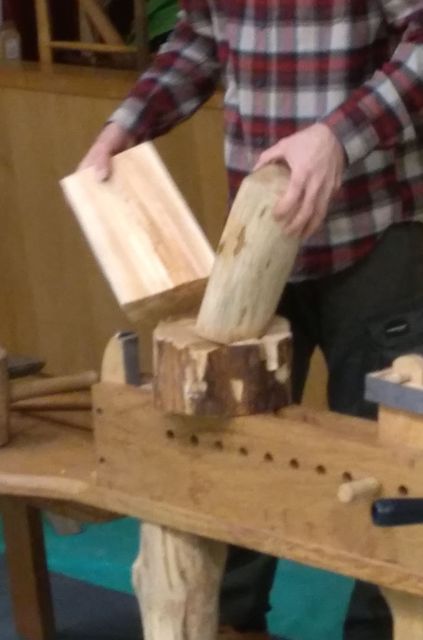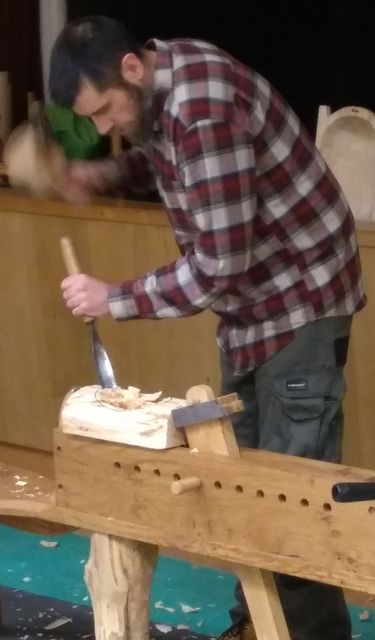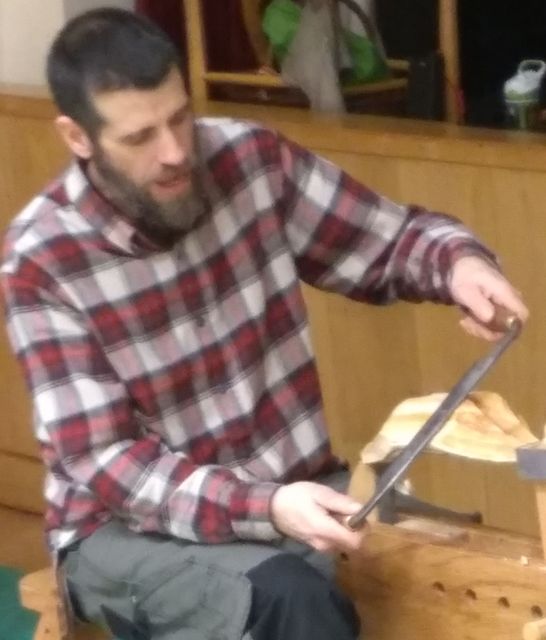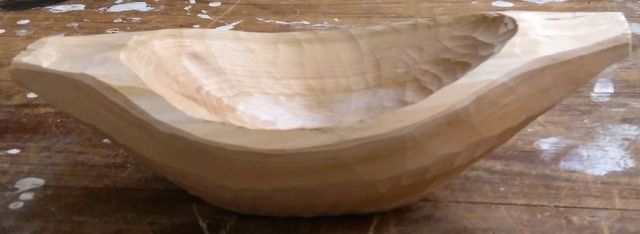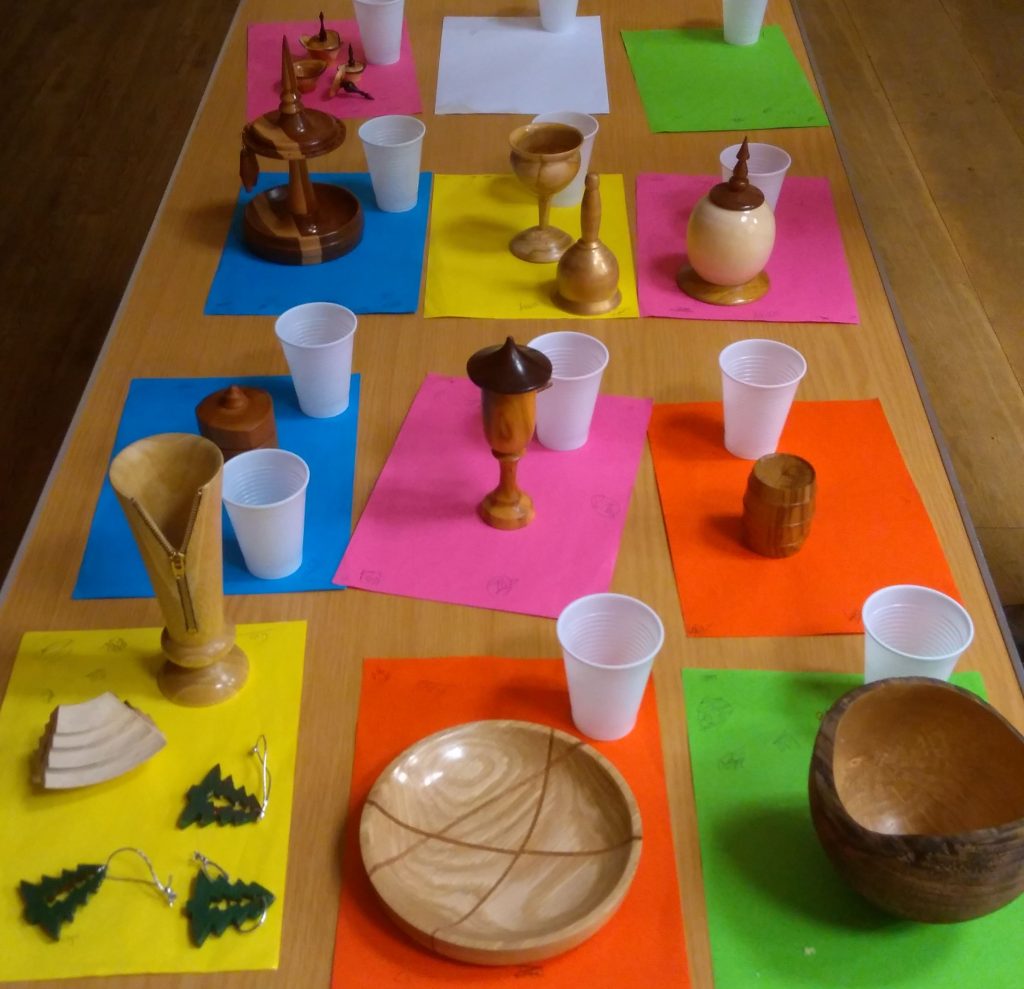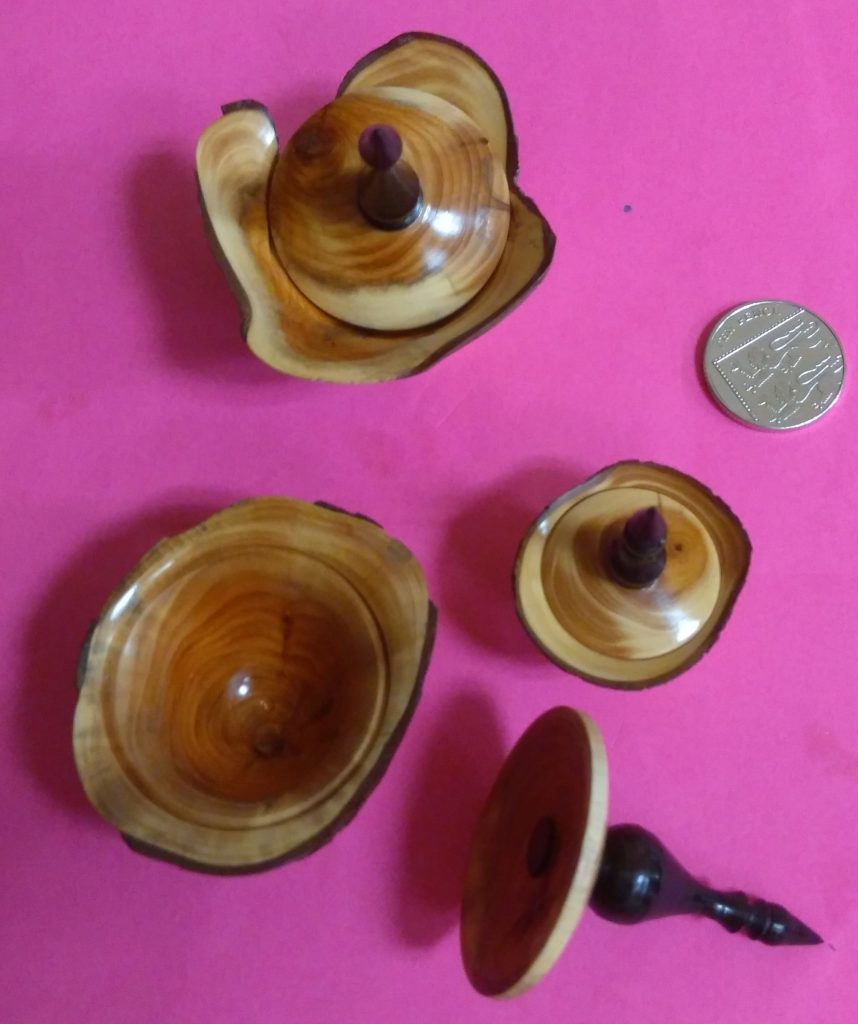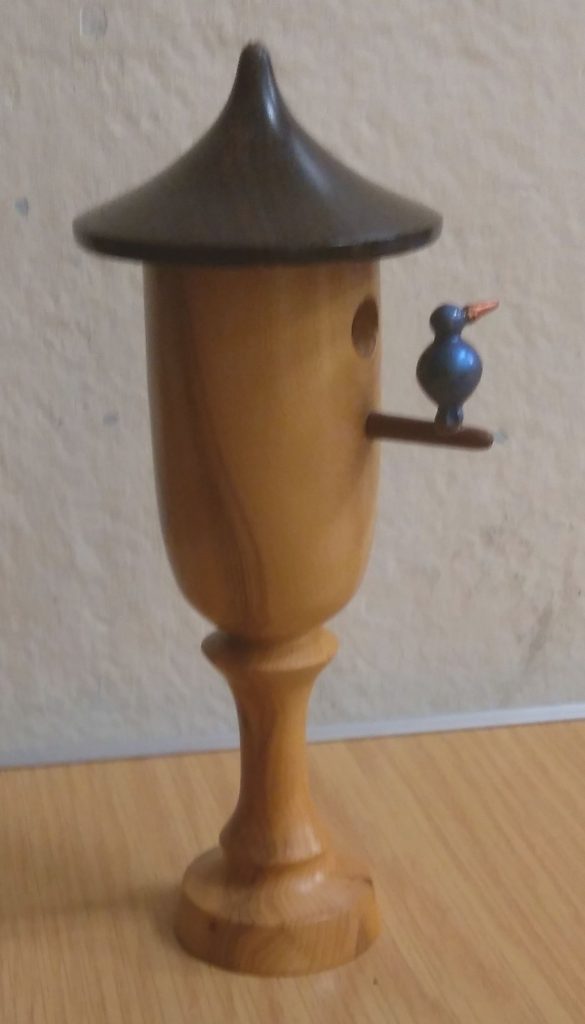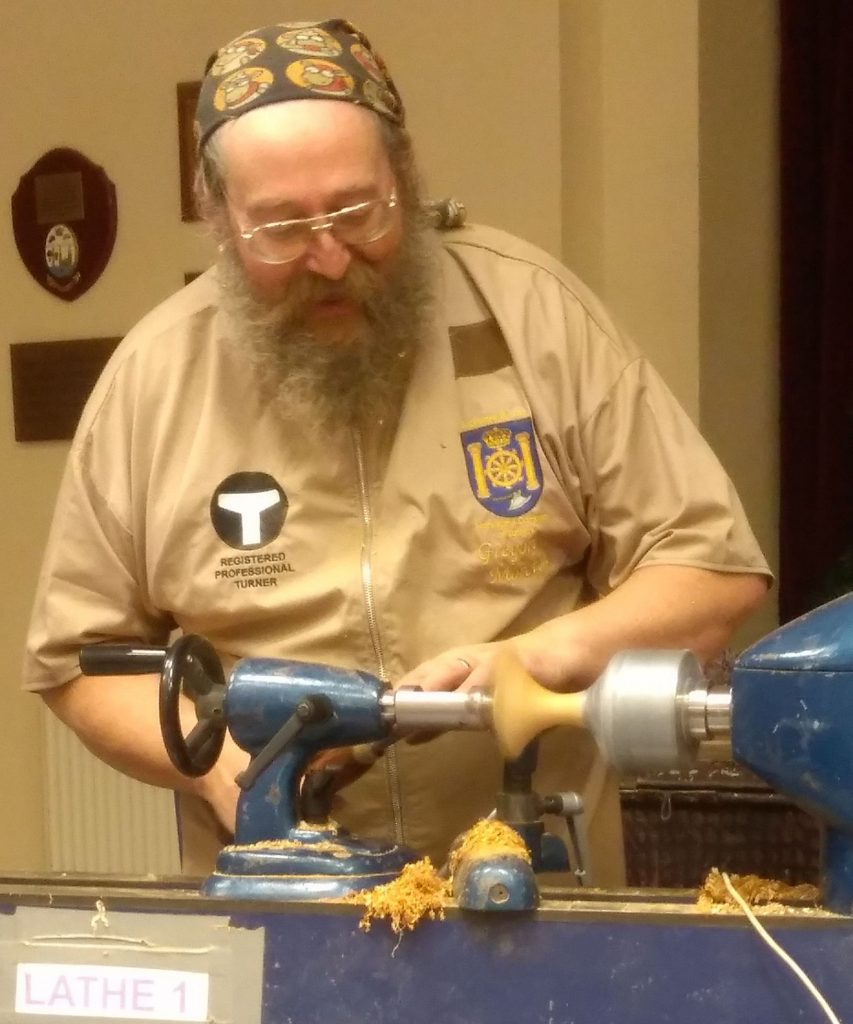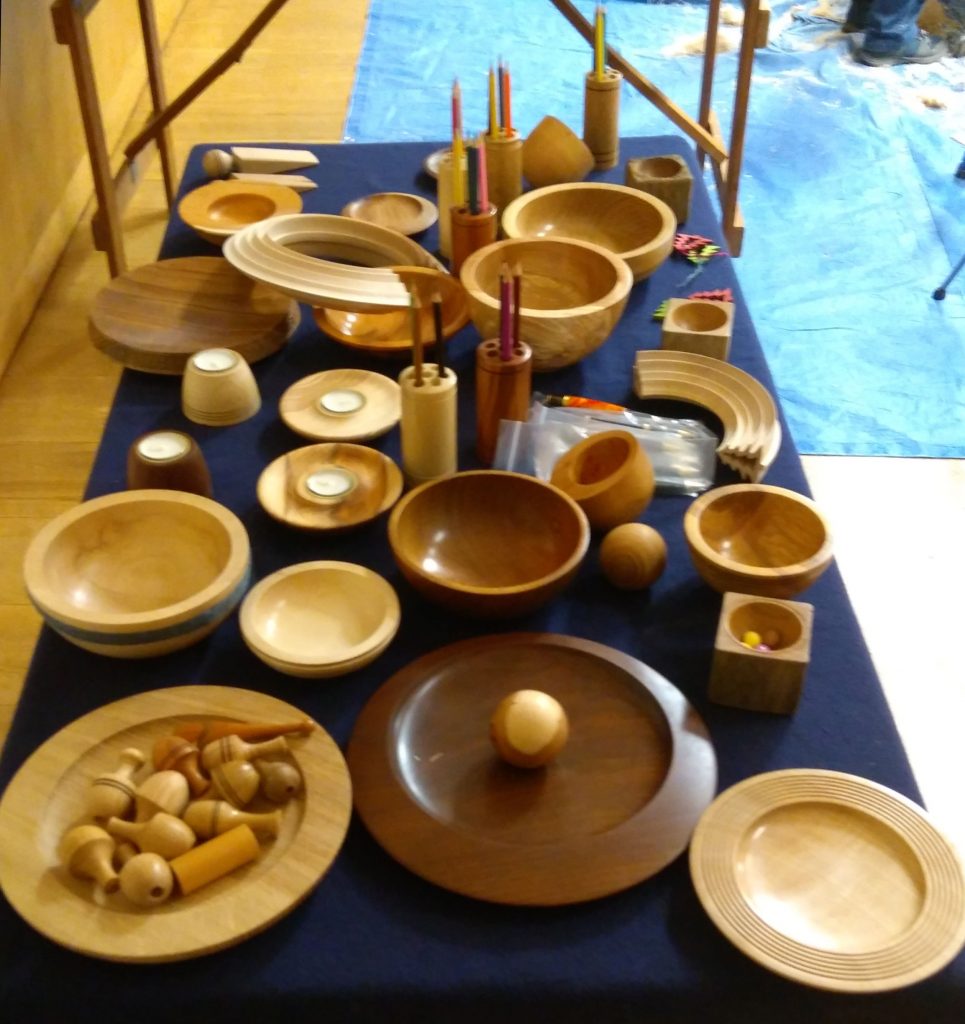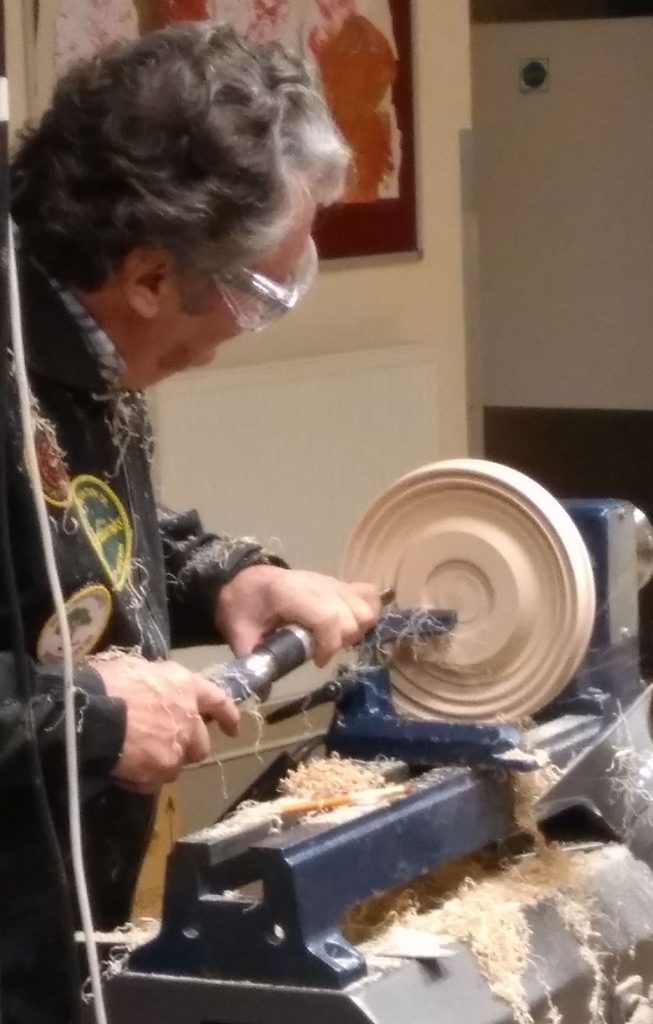There was a good turnout for today’s meeting, with the demonstration being given by Colin Smith, who is the AWGB Regional Representative South East. Colin’s demonstration this evening shows an alternative way to create a hollow form vessel, based on a technique published by Richard Raffan in his book “Turning Projects”.
Demo by Colin Smith.
Ash Hollow Form Made In Two Sections – Colin explained the essence of the demonstration for the evening. When undertaking a hollow form project the hollowing part of it take up an inordinate amount of time. This can be reduced drastically by making the item in 2 sections and then gluing these together once hollowed. This mean that you can use spindle or bowl gouges instead of special hollowing tools. There is no time taken in clearing swarf from within the hollow form so unproductive time is minimised. The following is an overview of the process, not an instructional step by step guide.
Colin first prepared the log by cutting it in half on the band saw. This was to make sure that the grain can be matched really closely at the glue up stage.
Each of the 2 sections were mounted in turn between centres and turned to round, rough shaped and a tenon created for the chuck.
The mating ends were measured to determine the optimum diameter that the glue tenon and mortice could achieve.
The bottom section was mounted in the chuck and the mating face trued and squared. This needs to be accurately flat so that the glue joint does not show. The predetermined diameter for the tenon was marked on the face and a 1mm deep tenon created. The blank can now be hollowed to the desired thickness using a spindle or bowl gouge as you would with any end grain hollowing.
This piece can now be removed from the chuck and the other section mounted. The process on this section was the same as for the bottom except that instead of a tenon a mortice is created to match the tenon on the bottom. The last bit of the hollowing would run out into what would be the spout of the piece.
In this instance Colin did not complete the hollowing or gluing processes so allowing time to show the finishing. In true “Blue Peter” fashion Colin produced one he had made earlier up to the point of being fully glued and dried.
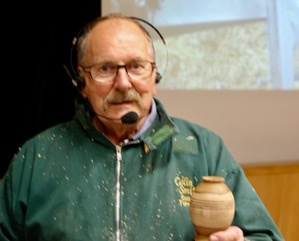
This piece he mounted in the chuck with the tail stock brought up to ensure centralising of the piece. The outside of the form was cleaned up and the final shape of the vase was created.
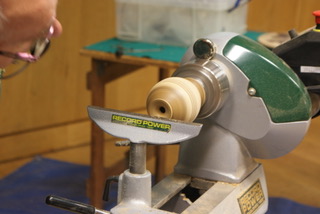
To disguise the glue joint further Colin produced 3 small beads using his “home made” beading tool. This was made from a ¼ inch spindle gouge that had become too short. It was ground off straight across at 45 degrees(ish) and because the shank was round could be rocked gently in use to create a nice bead. The first bead was made with the valley dead on the glue line, this must be accurate to make the best of the camouflage effect. Any further beads are made using the adjacent valleys to define the position.
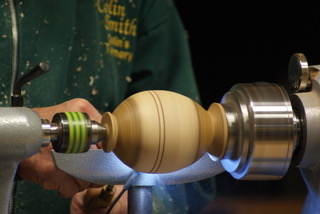
To enhance the beads further Colin used a knurling tool to create a texture on the beads, being careful not to damage the adjacent beads. Any slight tear out can then be cleaned up and the piece sanded and finished. Colin usually finishes his work with a carnuba/beeswax mixture, however, because of time constraints the sanding and waxing were not shown.
There were various other completed pieces that Colin brought along to show the standard that could be achieved.
This was a thoroughly entertaining and informative demonstration which should give us all ideas and insights into what we can achieve in our future projects.
One very serious point that Colin made during the demo was to do with shop safety. Recently he was working on a piece of sycamore which, when the bark was being turned away, produced lots of black soot like dust. Because he was using a filtered face shield that did not matter too much. He completed his work and went into the house, still all ok. However, when he went back to the workshop to clean up he disturbed the dust which he breathed in. This put him in hospital with serious breathing difficulties, so the moral of the story be very careful with your ppe and ensure that you keep yourself safe even when cleaning up.

